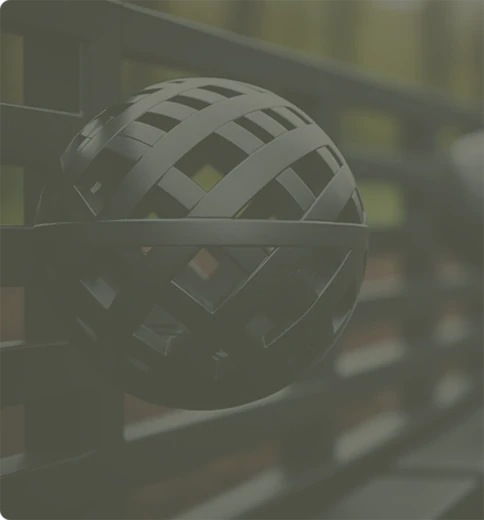Aluminum Window Channel Extrusion Designs for Enhanced Durability and Aesthetics
Understanding Aluminum Window Channel Extrusions
Aluminum has emerged as a popular material in construction and architectural design, especially when it comes to window systems. Among its various applications, one of the most significant is aluminum window channel extrusion. This unique manufacturing process involves shaping aluminum into specific profiles that serve as support structures for windows, doors, and other architectural elements. In this article, we will explore the concept of aluminum window channel extrusions, their benefits, applications, and manufacturing processes.
What are Aluminum Window Channel Extrusions?
Aluminum window channel extrusions are long, continuous forms of aluminum that have been shaped through a process known as extrusion. In this process, heated aluminum billets are forced through a die to create a specific cross-sectional shape. This results in uniform profiles that can be manufactured to precise specifications, making them an ideal choice for a variety of applications in the construction and window manufacturing industries.
These extrusions come in various shapes and sizes, designed to accommodate different window types and styles. The channels typically provide a framework or housing for the window, allowing for the insertion of glass panes, insulation, and other materials necessary for energy efficiency and durability.
Benefits of Aluminum Window Channel Extrusions
1. Strength and Durability Aluminum is known for its excellent strength-to-weight ratio. Extruded aluminum window channels are not only lightweight but also strong and resistant to warping, bending, or corrosion. This durability ensures longevity and less maintenance, making aluminum a practical choice for window framing.
2. Design Flexibility The extrusion process allows manufacturers to create highly customizable profiles. Architects and designers can specify unique shapes, sizes, and finishes that align with the aesthetic vision of their projects. This flexibility lends itself well to both residential and commercial applications.
3. Energy Efficiency Modern aluminum window channel extrusions can be designed with thermal breaks, which improve energy efficiency by reducing heat transfer. This is crucial for maintaining comfortable indoor temperatures and minimizing energy costs.
4. Sustainability Aluminum is a recyclable material, and the extrusion process can be environmentally friendly. By choosing aluminum, builders and manufacturers contribute to sustainability efforts, reducing the demand for alternative, less eco-friendly materials.
aluminum window channel extrusion

5. Low Maintenance Unlike wood, which requires regular painting and treatments to prevent decay, aluminum does not suffer from the same issues. It resists rust and doesn’t need constant upkeep, thus reducing overall maintenance costs for property owners.
Applications of Aluminum Window Channel Extrusions
Aluminum window channel extrusions find use in a diverse range of applications
- Residential Windows Homeowners and builders leverage aluminum extrusions for energy-efficient, durable window solutions that enhance the aesthetic appeal of homes. - Commercial Buildings In commercial real estate, where larger windows and curtain wall systems are common, extruded aluminum provides the necessary support and elegance. - Skylights and Atriums The strength and lightweight nature of aluminum make it a prime candidate for skylight frames and atrium designs, allowing for large expanses of glass while maintaining structural integrity.
- Sliding Doors Aluminum window channels are often employed in the construction of sliding doors, providing strong tracks that ensure smooth operation.
Manufacturing Process
The manufacturing of aluminum window channel extrusions begins with melting aluminum ingots and alloys, followed by casting them into billets. These billets are then heated and forced through a specifically designed die to create the desired profile. Post-extrusion, the profiles may undergo finishing processes such as anodizing, painting, or powder coating, enhancing their appearance and performance.
Quality control is crucial throughout the process to ensure consistency in the profiles and to verify that the extrusions meet industry standards. This attention to detail results in high-quality products that can be reliably used in diverse applications.
Conclusion
Aluminum window channel extrusions represent a pivotal development in modern architecture and construction. Their inherent advantages—strength, flexibility, energy efficiency, and sustainability—make them a preferred choice for window framing and other applications. As technology advances, the possibilities for customization and innovation in aluminum extrusions continue to expand, further solidifying their role in the future of building design and manufacturing. Whether you are a builder, architect, or homeowner, understanding the value of aluminum window channel extrusions can help inform your choices and contribute to successful construction projects.
-
Wrought Iron Components: Timeless Elegance and Structural StrengthNewsJul.28,2025
-
Window Hardware Essentials: Rollers, Handles, and Locking SolutionsNewsJul.28,2025
-
Small Agricultural Processing Machines: Corn Threshers, Cassava Chippers, Grain Peelers & Chaff CuttersNewsJul.28,2025
-
Sliding Rollers: Smooth, Silent, and Built to LastNewsJul.28,2025
-
Cast Iron Stoves: Timeless Heating with Modern EfficiencyNewsJul.28,2025
-
Cast Iron Pipe and Fitting: Durable, Fire-Resistant Solutions for Plumbing and DrainageNewsJul.28,2025
-
 Wrought Iron Components: Timeless Elegance and Structural StrengthJul-28-2025Wrought Iron Components: Timeless Elegance and Structural Strength
Wrought Iron Components: Timeless Elegance and Structural StrengthJul-28-2025Wrought Iron Components: Timeless Elegance and Structural Strength -
 Window Hardware Essentials: Rollers, Handles, and Locking SolutionsJul-28-2025Window Hardware Essentials: Rollers, Handles, and Locking Solutions
Window Hardware Essentials: Rollers, Handles, and Locking SolutionsJul-28-2025Window Hardware Essentials: Rollers, Handles, and Locking Solutions -
 Small Agricultural Processing Machines: Corn Threshers, Cassava Chippers, Grain Peelers & Chaff CuttersJul-28-2025Small Agricultural Processing Machines: Corn Threshers, Cassava Chippers, Grain Peelers & Chaff Cutters
Small Agricultural Processing Machines: Corn Threshers, Cassava Chippers, Grain Peelers & Chaff CuttersJul-28-2025Small Agricultural Processing Machines: Corn Threshers, Cassava Chippers, Grain Peelers & Chaff Cutters












